In our previous blog post we had discussed about Record Triggered Flow in Salesforce.In these blog post we discuss about What is Schedule-Triggered Flow
Contents
- 0.1 What is Schedule-Triggered Flow
- 0.2 Types of Salesforce Flows
- 0.3 Scheduled-Triggered Flow Basics
- 0.4 What is a Scheduled-Triggered Flow
- 0.5 Key Components and Terminology
- 1 Benefits of Using Scheduled-Triggered Flows
- 2 How Scheduled-Triggered Flows Work
- 3 Creating a Scheduled-Triggered Flow
- 4 Setting Up the Schedule
- 5 Building the Flow Logic
- 6 Testing Your Flow
- 7 Deploying Scheduled-Triggered Flows
- 8 Real-World Examples
- 9 Troubleshooting Common Issues
- 10 Advanced Tips and Tricks
- 11 Integrating with Other Salesforce Features
- 12 Conclusion
- 13 FAQs
What is Schedule-Triggered Flow
Salesforce Flows are robust automation tools that allow users to build complex business processes without extensive coding. These flows can collect data, execute logic, interact with Salesforce objects, and much more.
Types of Salesforce Flows
Salesforce offers several types of flows, including Screen Flows, Auto-Launched Flows, and Scheduled-Triggered Flows. Each type serves different purposes and can be tailored to specific business needs.
Scheduled-Triggered Flow Basics
What is a Scheduled-Triggered Flow
A Scheduled-Triggered Flow is a type of Salesforce Flow that runs automatically based on a predefined schedule. This means you can set up a flow to execute at specific times, such as daily, weekly, or monthly.
Key Components and Terminology
Understanding the key components and terminology of Scheduled-Triggered Flows is crucial. These include elements like the trigger, schedule settings, and flow actions.
Benefits of Using Scheduled-Triggered Flows
Automation and Efficiency
Scheduled-Triggered Flows bring automation to the next level by ensuring tasks are completed on a regular basis without manual intervention. This enhances operational efficiency and frees up valuable time for more strategic activities.
Use Cases in Business Processes
These flows are ideal for recurring tasks such as data cleanup, report generation, and routine updates. Businesses across various industries can leverage them to streamline processes and maintain data accuracy.
How Scheduled-Triggered Flows Work
Scheduling Criteria
The power of a Scheduled-Triggered Flow lies in its scheduling criteria. Users can define the exact timing and frequency of the flow’s execution, ensuring it aligns perfectly with business requirements.
Execution Process
Once scheduled, the flow executes according to the defined criteria, performing the specified actions such as updating records, sending notifications, or creating tasks.
Creating a Scheduled-Triggered Flow
Step-by-Step Guide
Login to Salesforce Account

Click gear icon Navigate to Setup
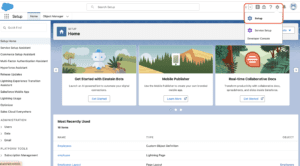
Search Quick find box in Flow builder
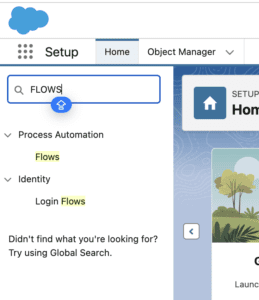
Click New Flow
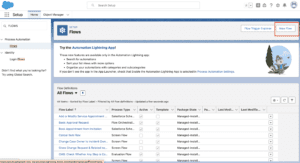
Select the “Scheduled-Triggered Flow” option.

Set Schedule
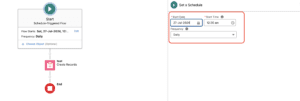
Define the schedule criteria. Click new Resources
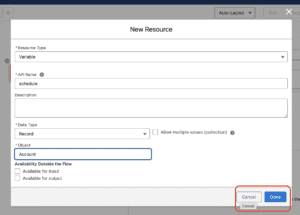
Add necessary elements and resources to the flow.
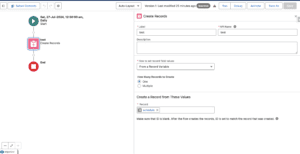
Save and activate the flow.
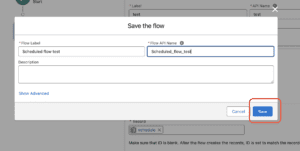
Best Practices
When creating a Scheduled-Triggered Flow, it’s important to follow best practices such as testing thoroughly, documenting the flow logic, and regularly reviewing and updating the flow to ensure it meets evolving business needs.
Setting Up the Schedule
Configuring the Schedule
Configuring the schedule involves specifying the start date, time, and frequency of the flow’s execution. Salesforce provides a user-friendly interface to set these parameters accurately.
Choosing the Right Frequency
Choosing the right frequency depends on the task at hand. For instance, daily flows are suitable for tasks requiring regular updates, while monthly flows may be better for less frequent, but equally important, processes.
Building the Flow Logic
Adding Elements and Resources
Building the flow logic involves adding elements such as decisions, assignments, and loops. Resources like variables, constants, and formulas can be utilized to enhance the flow’s functionality.
Defining Actions and Outcomes
Actions and outcomes define what the flow will do once triggered. This can include updating records, creating new entries, sending notifications, or executing complex logic.
Testing Your Flow
Importance of Testing
Testing is a critical step in the flow creation process. It ensures that the flow behaves as expected and meets the desired objectives.
Common Testing Methods
Common testing methods include running the flow in a sandbox environment, using test data, and performing end-to-end tests to validate the flow’s performance and reliability.
Deploying Scheduled-Triggered Flows
Deployment Considerations
When deploying a Scheduled-Triggered Flow, consider factors such as the impact on existing processes, user access, and security permissions.
Monitoring and Maintenance
Once deployed, it’s essential to monitor the flow’s performance and address any issues promptly. Regular maintenance helps keep the flow optimized and aligned with changing business needs.
Real-World Examples
Case Studies and Success Stories
Several organizations have successfully implemented Scheduled-Triggered Flows to automate repetitive tasks, resulting in significant time savings and improved accuracy.
Industry-Specific Applications
Different industries can benefit from these flows in unique ways. For instance, in the healthcare sector, Scheduled-Triggered Flows can automate patient follow-ups, while in retail, they can manage inventory updates.
Troubleshooting Common Issues
Identifying Common Problems
Common problems with Scheduled-Triggered Flows include incorrect scheduling, logic errors, and integration issues.
Solutions and Best Practices
Solutions involve double-checking schedule settings, reviewing flow logic, and ensuring smooth integration with other Salesforce features.
Advanced Tips and Tricks
Optimizing Flow Performance
To optimize flow performance, consider minimizing complex logic, using efficient data retrieval methods, and regularly reviewing the flow’s impact on system resources.
Leveraging Advanced Features
Advanced features like subflows, flow triggers, and custom components can further enhance the functionality and efficiency of Scheduled-Triggered Flows.
Integrating with Other Salesforce Features
Connecting with Other Automation Tools
Integrating Scheduled-Triggered Flows with other Salesforce automation tools, such as Process Builder and Workflow Rules, can create a comprehensive automation strategy.
Enhancing Functionality
Enhancing functionality involves leveraging Salesforce’s robust ecosystem of tools and features to create seamless and powerful automation processes.
Conclusion
Scheduled-Triggered Flows are a powerful tool in the Salesforce automation arsenal. By automating routine tasks based on specific schedules, businesses can achieve greater efficiency, accuracy, and consistency in their operations. Implementing these flows requires careful planning, testing, and monitoring, but the benefits are well worth the effort.
We Want to more about What is Schedule-Triggered Flow Click Here
FAQs
What is a Scheduled-Triggered Flow in Salesforce?
A Scheduled-Triggered Flow is a type of Salesforce Flow that runs automatically based on a predefined schedule, allowing for automated processes without manual intervention.
How do I create a Scheduled-Triggered Flow?
Creating a Scheduled-Triggered Flow involves navigating to the Flow Builder, selecting the appropriate flow type, defining the schedule, adding elements and resources, and testing the flow thoroughly before deployment.
What are the benefits of using Scheduled-Triggered Flows?
The benefits include increased automation, enhanced efficiency, time savings, and improved accuracy in performing routine tasks.
Can I test my Scheduled-Triggered Flow before deploying it?
Yes, testing is a crucial step. You can test the flow in a sandbox environment using test data to ensure it behaves as expected.
How do I troubleshoot issues with my Scheduled-Triggered Flow? Troubleshooting involves identifying common problems such as scheduling errors or logic issues, and implementing best practices and solutions to address these challenges.
In our next blog post we will discuss about Platform Event-Triggered Flow
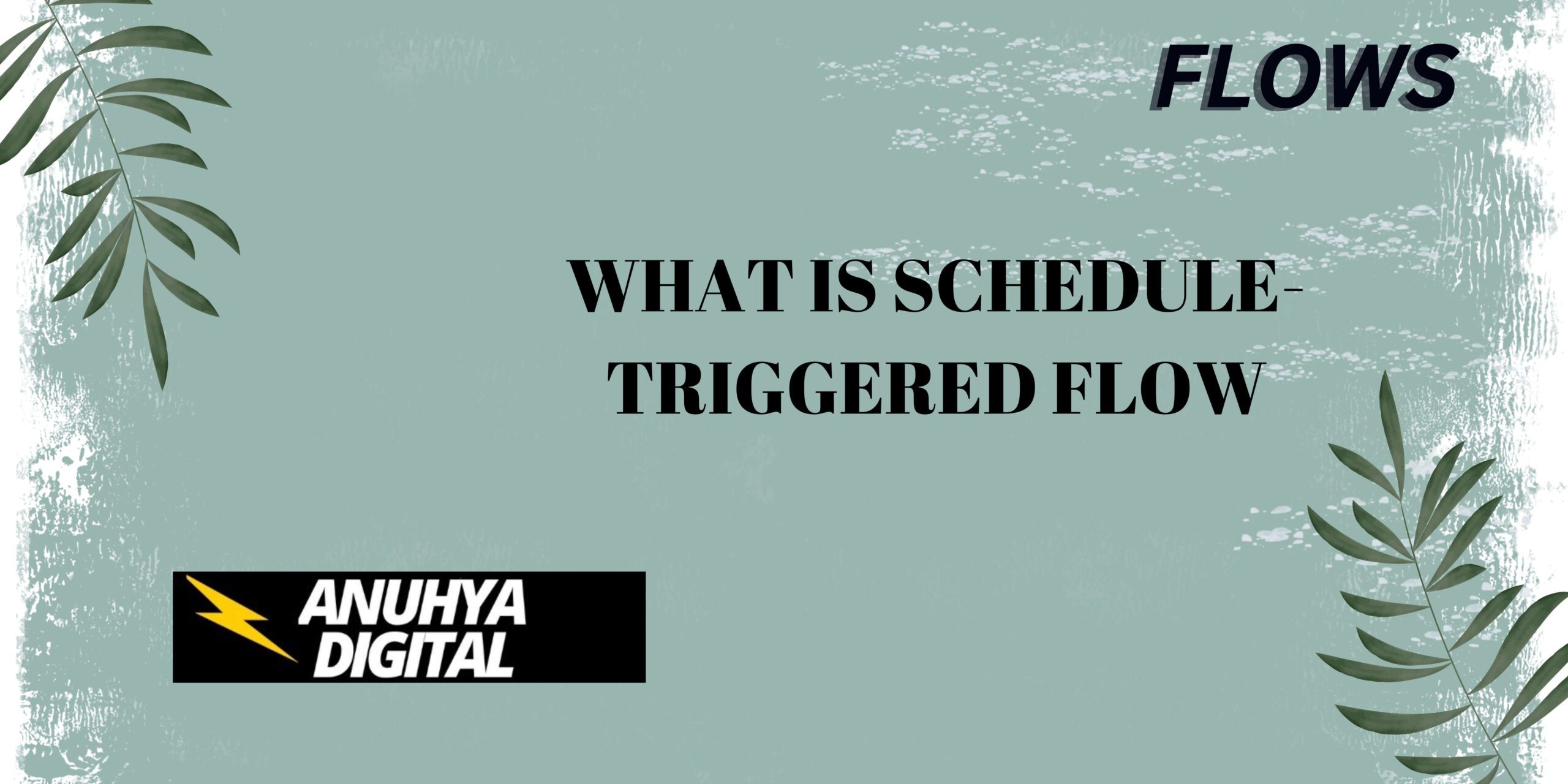
2 thoughts on “What is Schedule-Triggered Flow”